By David Finkel
Washington Post Staff Writer
BAGHDAD-- Everything in the Army is supposed to have a task and a purpose, and this simple mission was no different. The task was to get 27 soldiers from Point A to Point B, from their neighborhood combat outpost to an Army base four miles away. The purpose was to attend a memorial service for one of their fellow soldiers, who had died eight days earlier while attempting to make the very same trip.
And so the leaders of Alpha Company had a decision to make: drive in Humvees and risk getting blown up by a roadside bomb, which is what happened to their friend, who bled to death as they worked to save him, or try to minimize the risk of a bomb by walking the four miles in searing summer heat, which would increase the chances of being shot by a sniper.
Such were the choices last week in eastern Baghdad, an area that has become more dangerous since the inception of the Baghdad security plan earlier this year. A largely Shiite area, it had once been less deadly than those parts of Baghdad with Sunni-Shiite fault lines. It was now twitching with daily gunfire, mortars, rockets, grenades and, most of all, roadside bombs, all targeting U.S. soldiers. The attackers were thought to be affiliated with the militia of Shiite cleric Moqtada al-Sadr.
All through June, more and more of those attacks were aimed at Alpha Company and its parent unit, the 2nd Battalion of the 16th Infantry Regiment, 4th Infantry Brigade Combat Team, 1st Infantry Division, which had arrived in eastern Baghdad in mid-February as part of President Bush's troop escalation. In March, its first full month of deployment, the battalion was hit by 12 roadside bombs, referred to by the military as improvised explosive devices, or IEDs. In April, as soldiers began moving into neighborhood outposts and rounding up suspected insurgents, that number was 21. In May, as they met with local leaders and got some community improvement projects going, the number was 27.
And then came June, when there were 80 roadside bombings, with 13 other bombs discovered before they exploded. And it wasn't just bombs targeting the battalion: There were also 52 instances of direct fire involving small arms or rocket-propelled grenades and 26 instances of attacks with rockets or mortars. By the end of the month, one soldier had lost a hand, another an arm, another an eye, another had been shot in the face, 19 in all had been injured and four others had died.
One explanation for such a surge in attacks: "We're winning. They wouldn't be fighting if we weren't winning. They wouldn't have a reason to," said Lt. Col. Ralph Kauzlarich, the battalion commander. "It's a measure of effectiveness."
But he also described the month as "difficult" and "challenging," while his second in command, Maj. Brent Cummings, described it as "a crappy, crappy month." The commander of Alpha Company, Capt. Ricky Taylor -- who would be the one to decide whether to walk or drive -- called it "very, very difficult"; 2nd Platoon Sgt. 1st Class Corey King -- who would be the one to plan the route -- called it "ugly. Ugly. Ugly."
All were thinking about June 28, when the 2nd Platoon was midway between its outpost and the main base at 6:48 a.m. and an IED exploded so loudly that it was heard at the outpost and on the base, where it rattled Cummings's door, waking him up.
Quickly, Cummings was on the phone to Taylor, who was at the outpost, listening on the radio.
"What's it look like?" Cummings would recall asking.
"Sir, it's bad," Taylor said. "I can hear screaming in the background."
That turned out to be a soldier in the second Humvee of the convoy whose right arm had been severed and was screaming, "My arm, my arm!" He would survive.
But near him, saying nothing at all, was Sgt. William W. Crow Jr., 28, husband and father of four. He had been wearing body armor, eye protection, ear protection, a throat protector, a groin protector, heat-resistant gloves and his helmet. He had been sitting in the right rear seat of a $119,000, up-armor Humvee, behind a thick glass window and a 400-pound door. When the bomb, consisting of parts costing less than $100, exploded, it turned a copper disc with a circumference of perhaps six inches into a huge bullet that penetrated the right rear door of the Humvee as if it were nothing more than a door on one of Baghdad's flimsy, decaying taxis.
Against such a weapon, optimally aimed and detonated, Crow didn't have a chance, and that was what King was thinking about as he plotted his route in advance of last week's trip.
The word on the street was that the day might be more dangerous than usual because it was the birthday of Fatima, daughter of the prophet Muhammad, and large crowds were predicted. Additionally, Sadr, the Shiite cleric, had reportedly issued an edict saying that soldiers should be targeted more heavily than usual for several days, and a tip had come in about a hidden IED along one of the routes that King was considering, meaning the easiest route was momentarily off limits.
With all that in mind, the plan he came up with, and which Taylor approved, involved beginning the trip just after curfew ended at 5 a.m. That way there would be people on the streets who the soldiers could watch for clues, but not so many people that clues couldn't be seen.
They would also try to avoid open areas and move along as many narrow streets as possible. That was because Shiites haven't shown a willingness to hurt their own people when detonating roadside bombs, although there were signs that was changing. A few days before, someone set off an IED as a convoy passed, even though a pregnant woman was in the way, which left her, according to photos taken by soldiers trying to save her, sprawled on the ground in shredded clothing, her face blackened and her rounded stomach coated with blood.
And they would drive -- but only some of the way. Most of the way they would walk, which is how they began at 5:15 a.m. Weighed down with 80 pounds of body armor, weapons and ammunition, and with the temperature already 90 degrees, 15 soldiers set off on foot, trailed by six Humvees, each containing a driver and gunner.
Their pace, as Taylor would put it later, was "deliberate . . . not a slow walk, not a fast walk. The pucker factor is pretty high."
It was still dark out so they navigated at first using night-vision goggles. They moved along sidewalks, rather than in the middle of the street. They maneuvered cautiously past several known hot spots, including one where a roadside bomb had exploded even though it was within sight of an Iraqi security forces checkpoint. And then, safely past, they got in their Humvees to travel the next several blocks.
By now they had been out for nearly an hour. The sun was up and they took off their night-vision gear, then resumed walking as they neared a street that in June had become one of the most dangerous of all. Two hundred yards -- that's all they needed to go on this street, and the worst of it would be over.
They approached from a side street and paused at the intersection. To the left was an orange truck, parked and apparently unoccupied. To the right was an empty street, and that's the direction they turned, led by Sgt. King, who would later detail what happened, as would Capt. Taylor and several other soldiers.
King circled a pile of trash that turned out to be nothing but a pile of trash.
He examined a concrete block that was nothing other than a concrete block.
He looked down the street and saw a parked car, hood up, trunk open, and a man next to it who appeared to be holding a small container of gasoline.
He approached another concrete block and saw that it was actually a piece of foam -- and then he saw the wire.
"Get back! Get back!" he hollered.
"What is it?" Taylor, in the rear, radioed.
"IED!" King radioed back, and as soldiers began moving away, and King looked down an alley and locked eyes for a moment with a man peering around a corner, the bomb exploded.
The boom was ear-splitting, the air turned dark with flying dirt, and when the echoes ended, and the dirt settled, some soldiers were down on their hands and knees, stunned, filthy, unable to hear. Others began tracing the wire down the alley, and when they got to the spot where King had seen the man, they found only a mattress where someone could lie in comfort while gazing up the alley, waiting for a convoy to rumble past.
In came the reports: no one hurt, except for headaches and ringing ears. They searched for the triggerman, but he was gone. They searched for the man with the gasoline container, but he was gone, too. They rounded up two men in the vicinity who perhaps knew something, and as they regrouped to move on, all of them safe, a second explosion occurred.
It was another IED, this one from up by the orange truck.
A cloud of dirt moved down the street.
Then came the whoosh of a rocket-propelled grenade, flying overhead and exploding in the distance.
And then came bursts of machine-gun fire, which was followed by much louder bursts of return fire from the mounted machine guns in the Humvees, and then everything went suddenly quiet until a few minutes later, when two Apache helicopters swooped in to escort the soldiers the rest of the way.
One helicopter stayed high and one came in low, only a couple of hundred feet in the air. It was low enough that the soldiers could see the pilot and co-pilot, who were looking down not only at them, but at rooftops, at roads, at awakening eastern Baghdad, and now, as the soldiers continued their walk, at something that made the pilots suspect there was yet another roadside bomb just ahead.
And so Taylor and King faced another decision, which resulted in the soldiers diverting through a fence opening into an open field, the very place they didn't want to be. Carefully, they crossed the field, fully exposed to snipers, and when they got to the far end and found themselves fenced in, they made the final decision of the mission -- to use a Humvee to crash through.
It was past 7 a.m. now, two hours since they had left. They kept walking until they were by the last of the hot spots, and then they drove down the final road and into the safety of the base. Four of the soldiers were given diagnoses of concussions by doctors there whose next case involved another IED and a soldier from another battalion -- injuries massive, nothing to do but pronounce him dead.
That night, at the memorial service for Crow, Taylor said in his eulogy: "We will continue to fight the fight."
He was followed by another eulogist, one of the soldiers who had tried to save Crow, who could get only so far in his speech before his voice cracked and he had to stop.
Some of the soldiers cried. Some didn't. Some prayed. Some hugged. Some went outside into the late-day heat and had a smoke.
"This sucks," one of them said.
But they were all alive. Their mission had been a success.
Which meant that soon they would be on their next one: getting from Point B back to Point A.
Monday, July 9, 2007
Subscribe to:
Post Comments (Atom)

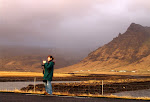
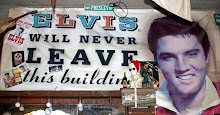

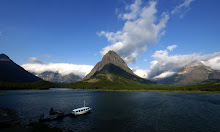
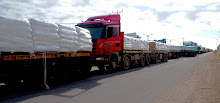
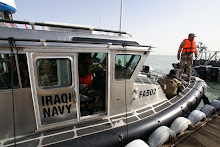

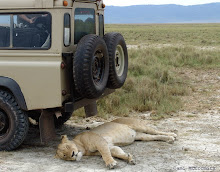
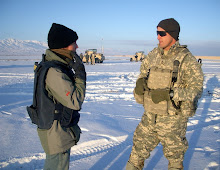



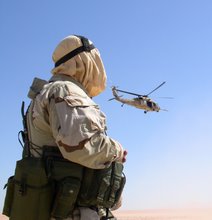
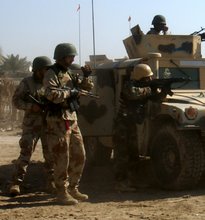
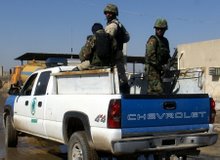
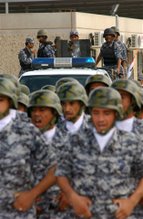
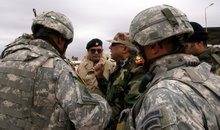
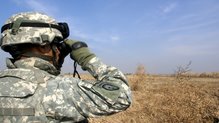
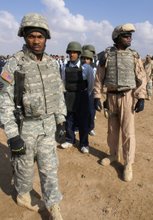

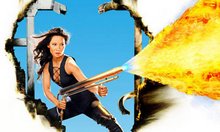
No comments:
Post a Comment